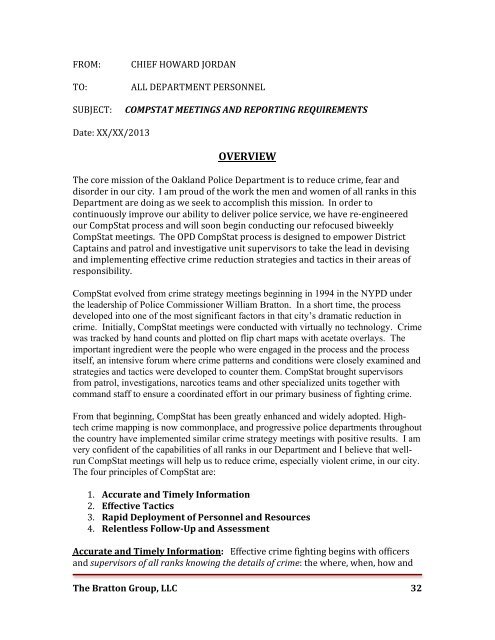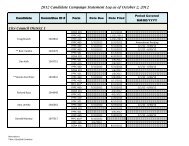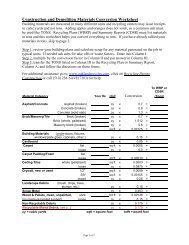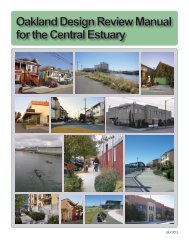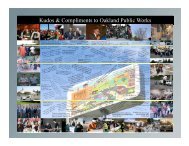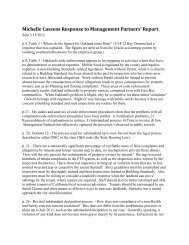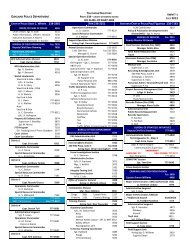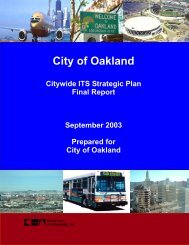The Bratton Group Report - City of Oakland
The Bratton Group Report - City of Oakland
The Bratton Group Report - City of Oakland
You also want an ePaper? Increase the reach of your titles
YUMPU automatically turns print PDFs into web optimized ePapers that Google loves.
FROM: <br />
TO: <br />
SUBJECT: <br />
CHIEF HOWARD JORDAN <br />
ALL DEPARTMENT PERSONNEL <br />
COMPSTAT MEETINGS AND REPORTING REQUIREMENTS <br />
Date: XX/XX/2013 <br />
<strong>The</strong> <strong>Bratton</strong> <strong>Group</strong>, LLC <br />
OVERVIEW <br />
<strong>The</strong> core mission <strong>of</strong> the <strong>Oakland</strong> Police Department is to reduce crime, fear and <br />
disorder in our city. I am proud <strong>of</strong> the work the men and women <strong>of</strong> all ranks in this <br />
Department are doing as we seek to accomplish this mission. In order to <br />
continuously improve our ability to deliver police service, we have re-‐engineered <br />
our CompStat process and will soon begin conducting our refocused biweekly <br />
CompStat meetings. <strong>The</strong> OPD CompStat process is designed to empower District <br />
Captains and patrol and investigative unit supervisors to take the lead in devising <br />
and implementing effective crime reduction strategies and tactics in their areas <strong>of</strong> <br />
responsibility. <br />
CompStat evolved from crime strategy meetings beginning in 1994 in the NYPD under<br />
the leadership <strong>of</strong> Police Commissioner William <strong>Bratton</strong>. In a short time, the process<br />
developed into one <strong>of</strong> the most significant factors in that city’s dramatic reduction in<br />
crime. Initially, CompStat meetings were conducted with virtually no technology. Crime<br />
was tracked by hand counts and plotted on flip chart maps with acetate overlays. <strong>The</strong><br />
important ingredient were the people who were engaged in the process and the process<br />
itself, an intensive forum where crime patterns and conditions were closely examined and<br />
strategies and tactics were developed to counter them. CompStat brought supervisors<br />
from patrol, investigations, narcotics teams and other specialized units together with<br />
command staff to ensure a coordinated effort in our primary business <strong>of</strong> fighting crime.<br />
From that beginning, CompStat has been greatly enhanced and widely adopted. Hightech<br />
crime mapping is now commonplace, and progressive police departments throughout<br />
the country have implemented similar crime strategy meetings with positive results. I am<br />
very confident <strong>of</strong> the capabilities <strong>of</strong> all ranks in our Department and I believe that wellrun<br />
CompStat meetings will help us to reduce crime, especially violent crime, in our city.<br />
<strong>The</strong> four principles <strong>of</strong> CompStat are:<br />
1. Accurate and Timely Information <br />
2. Effective Tactics <br />
3. Rapid Deployment <strong>of</strong> Personnel and Resources <br />
4. Relentless Follow-‐Up and Assessment <br />
Accurate and Timely Information: Effective crime fighting begins with <strong>of</strong>ficers <br />
and supervisors <strong>of</strong> all ranks knowing the details <strong>of</strong> crime: the where, when, how and <br />
<br />
32


